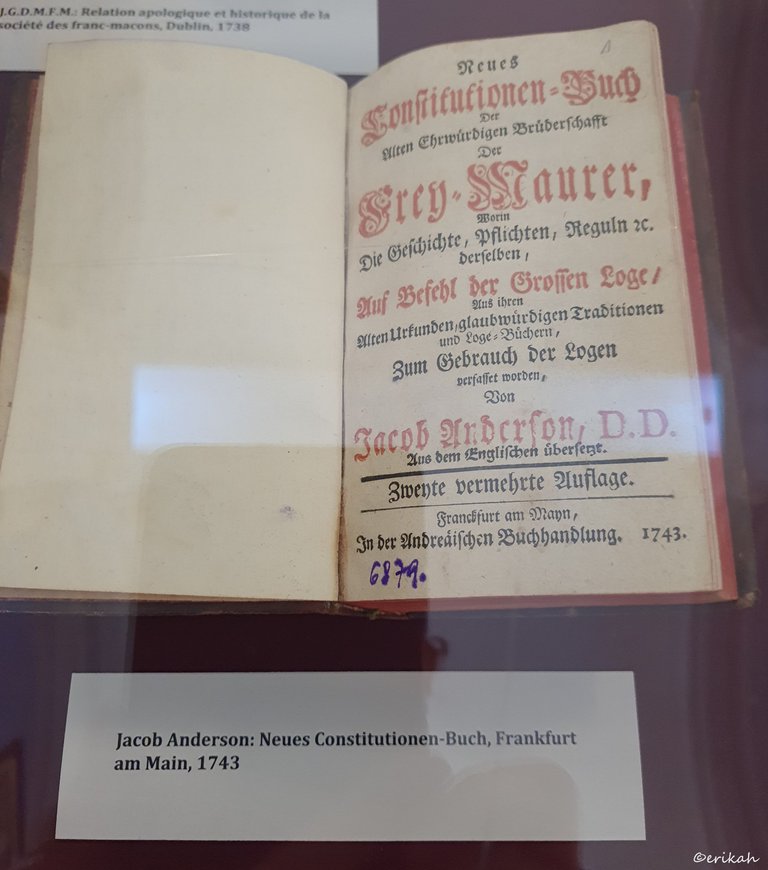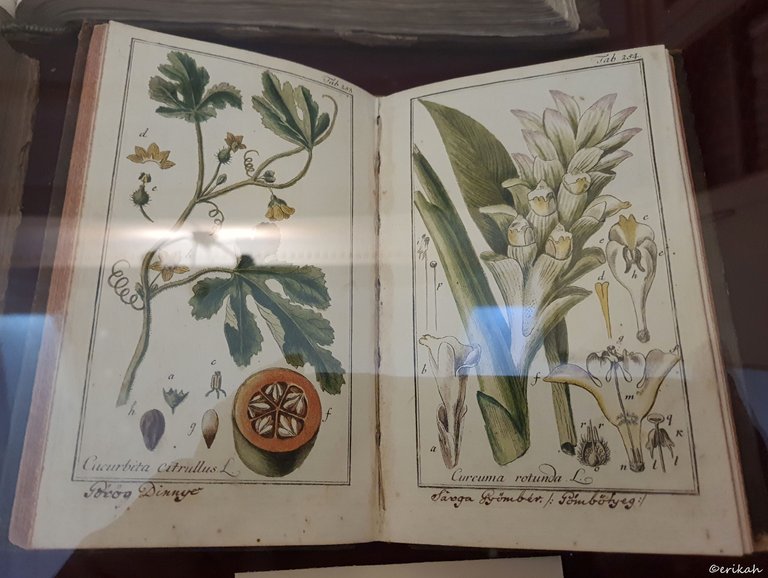As promised, I'm back to show you an amazing and unique book collection. Two days ago I showed you the Teleki Téka (Teleki Library), which can be found in Targu Mures (Marosvásárhely). The Teleki Téka was a library at first, open to the public, then it became a museum as the book you can find here are a couple of centuries old, maybe even older.

Today, the continuously growing book collection is focused on scientific subjects, specializing in history, local history, cultural history, and social sciences. On an average, 100 – 150 people use the Reading Room and the museum is visited by thousands of tourists a year. source


The book collection starts right at the entrance, where you can find these bookshelves full of old books.

For those of you, who have missed my post, this is how the library (museum now) looks like inside.

Unlike in fancy museums, here they don't have audio guides yet and I doubt they are going to have it anytime soon. Not because it's impossible to set it up, but because the whole museum is small and only a limited number of visitors can attend in the same time. Also they have everything printed out and you can check the cardboard next to the displayed items. I was given a piece of printed paper, to read the history of the museum/library. You can check my other post for the brief history.

Everything that is displayed is protected by glass, not only from the visitors, but from the temperature and humidity fluctuation.

This book for example is from 1791, which makes it 231 years old. It is written in Hungarian, but it's an old language we don't use anymore, I see the a', which is not in use anymore. As far as I can tell, this page is about about free masons.

A German book from 1787, printed in München, Germany, about the Illuminati. I'd like to mention that photographing something under glass is a pain, so my goal was to find a spot, from where there are no reflections and can get a half decent photo.

What I miss in books nowadays is those illustrations. Obviously we can have the best quality photo or image, there's no need for those drawings, illustrations, but that gives an even more feeling. The book above even has the free mason's symbol.

These old German books are written with old Gothic letters that are not in use anymore. This book is from 1743 and it is the New Constitution, printed in Frankfurt am Main, Germany. There's a number in most of them, the library registration number, written with in as that was mainly used back then. There was no ball point pen.


A surprising document, that I did not expect to see here, it's the engraved copy of The Declaration of Independence of the United States, John Binns' version.

Reproductions of cameos. It's a collection of 1803 pieces from the 18th century, by Sebastian Hess.


This is the description of Egypt, made in Paris, between 1809 and 1822.

Does this look like a map we have these days? Nope, not by far. It's a map with hand colored engravings, made by Janssonius, a Dutch cartographer in Amsterdam, in 1657.

Map of Transylvania from the 16th century, by Abraham Ortelius, Antwerp en, 1574. What is important to note at maps is how much borders have changed. Over the decades, politicians sitting at the conference table, made decisions that changed the life of millions.

The first pocket atlas, by Johannes Honterus, issued in Tigurini, Zürich, in 1583. This summer I've been to a few Transylvanian cities and wherever I go, whatever I visit, Johannes Honterus' name is everywhere :)
I wanted to show you how small it is as photos can be deceiving.

Looking at this drawing in 2022 makes me think how much work went into creating it. This is not digital work as it was created in 1762. Making mistakes was out of the question as you had to start again I suppose. Look at the details. It's insane.

There were these cards, explaining the history of people and things on display.

This is a Bible in Hungarian, from ... 😄 Let's see, who's up to a challenge? I've edited out the date of the book but it is written on the first page with Roman numbers.

This is the first book printed in Targu Mures (Marosvásárhely), where the museum is, in 1786.


This is the first ever printed document in Transylvania, from 1525. I'm trying to figure out the language, but seems Latin. The title of the document is Nouus annus iubilaeus. It's 497 years old.

Hungarian Encyclopedia written by Apácai Csere János, printed in Utrecht, The Netherlands in 1653. According to Wikipedia, this is the first textbook written in Hungarian.
Imagine how precious these books were in those days. Getting your hands on a copy must have been a really hard thing to do.

This is an anatomy textbook from 1803, issues in Weimar, Germany. I don't even ant to imagine how medical students were learning back then.

Instead of photographs, they had illustration in 1781, when this botany book was printed in Nürnberg.




I can't even imagine how valuable this collection is. This is Transylvania's past and heritage as well. It's simply invaluable. Again, I'm glad it survived the communist regime as back in those days a good way to cancel the past was to destroy every piece of evidence. I was also wondering how many copies of these books exist worldwide and where are those.

This is a chronicle about the things of the world, as the label says, from 1559. It's funny though, but it's true. I suppose these books registered what happened that time over the years.


Next time I'm around, I'm going to try to visit the reading room and read a book. I have no idea which book yet, but will be exciting to take an old book into my hands. Will be wearing gloves anyway.

If you're a newbie, you may want to check out these guides:
- Communities Explained - Newbie Guide
- Cross Posting And Reposting Explained, Using PeakD
- Hive Is Not For Me
- How To Pump Your Reputation Fast - Newbie Guide
- Tips And Tricks & Useful Hive Tools For Newbies


